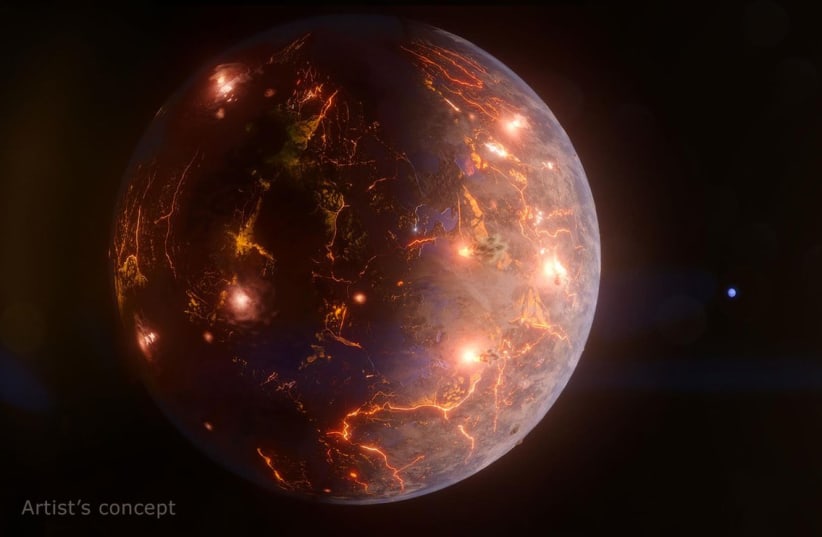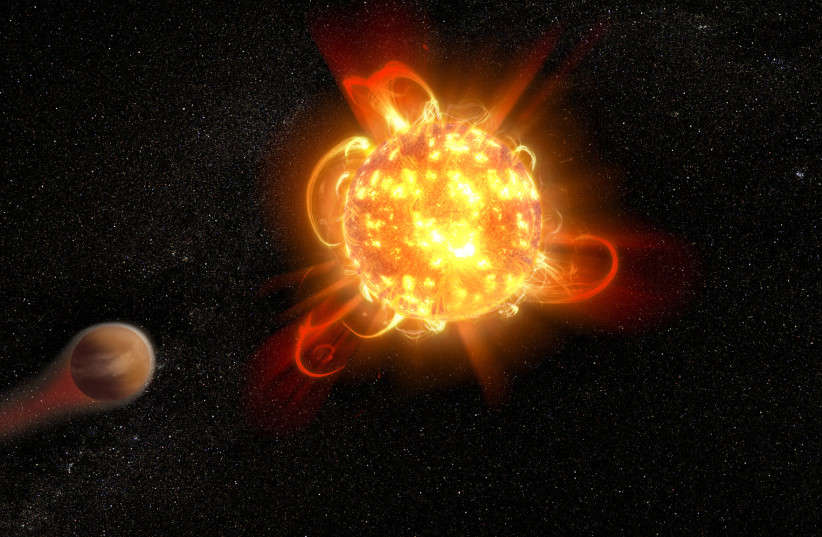Astronomers have made a groundbreaking discovery, uncovering a fascinating Earth-size exoplanet located beyond our solar system. Named LP 791-18 d, this distant world may be characterized by a unique feature - volcanoes dotting its surface.
The recent findings, published in the prestigious scientific journal Nature, offer insights into LP 791-18 d's volcanic activity and its potential to sustain an atmosphere.
The team of scientists, led by Merrin Peterson from the University of Montreal's Trottier Institute for Research on Exoplanets (iREx), employed data from NASA's TESS (Transiting Exoplanet Survey Satellite) and retired Spitzer Space Telescope, in addition to a suite of ground-breaking observatories. This comprehensive approach allowed researchers to gather crucial information about LP 791-18 d.
New exoplanet piques NASA scientists' interest
Situated approximately 90 light-years away in the southern constellation Crater, LP 791-18 orbits a small red dwarf star. The exoplanet is only slightly larger and more massive than Earth, positioning it within the range of habitable worlds that astronomers find particularly intriguing.
LP 791-18 d's most striking characteristic is its tidal locking, a phenomenon in which one side of the planet always faces its star.
As a result, the side facing the star experiences extreme heat, rendering it inhospitable for liquid water.
However, the research team suggests that the planet's abundant volcanic activity could play a vital role in sustaining an atmosphere. This, in turn, might allow water vapor to condense on the planet's cooler night side, creating favorable conditions for potential liquid water.
The intricate orbital dynamics between LP 791-18 d and its neighboring planet, LP 791-18 c, contribute to the exoplanet's volcanic activity.
As LP 791-18 d completes its orbit, frequently passes in close proximity ot the larger planet c. The gravitational interaction between the two bodies causes gravitational tugs, deforming planet d's trajectory and resulting in an elliptical orbit.
These repeated deformations generate internal friction, significantly heating the planet's interior. The volcanic activity observed on LP 791-18 d draws a parallel to the influential gravitational effects of Jupiter and its volcanic moon, lo.
LP 791-18 d's position near the inner edge of the habitable zone - a range of distances from a star where liquid water could potentially exist on a planet's surface - adds to its significance.
The research team speculates that the volcanic processes on the exoplanet could help maintain an atmosphere, increasing the likelihood of water condensation on the cooler night side.
These findings have garnered attention, leading to the approval of observing time on the upcoming James Webb Space Telescope to study planet c and researchers believe that LP 791-18 d is also an excellent candidate for future atmospheric studies.
Co-author Jessie Christiansen, a research scientist at NASA's Exoplanet Science Institute at Caltech, emphasizes the astrobiological implications of the discovery. Exploring the role of tectonic and volcanic activity in the emergence and sustenance of life remains a crucial question in astrobiology.
LP 791-18 d's volcanic processes not only have the potential to generate an atmosphere but also stir up materials that might otherwise remain trapped in the crust, including life-sustaining elements like carbon.
The groundbreaking observations made by NASA's Spitzer Space Telescope, which captured data on the LP 791-18 system before its decommissioning in January 2020, have paved the way for a deeper understanding of exoplanets and their diverse characteristics.

